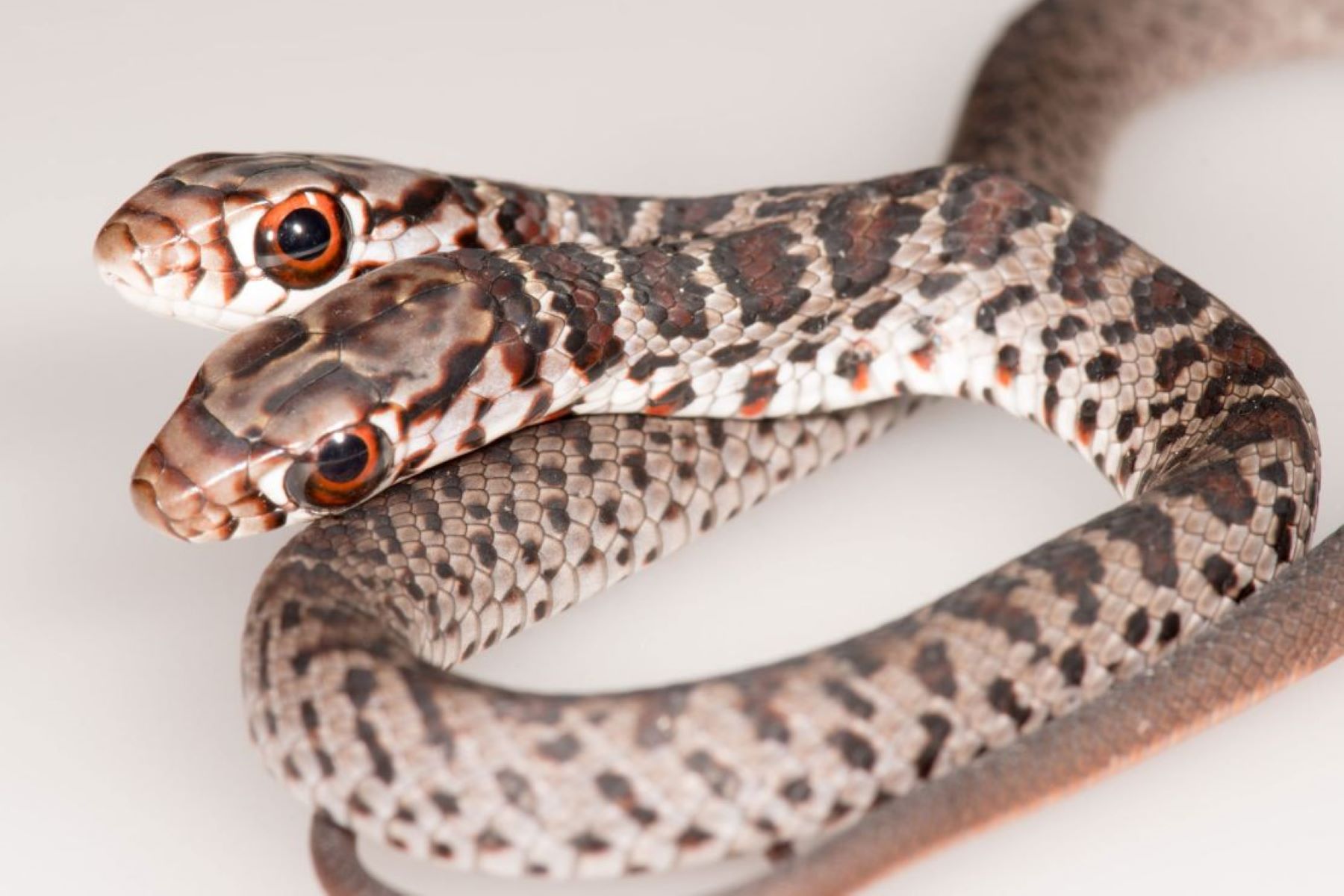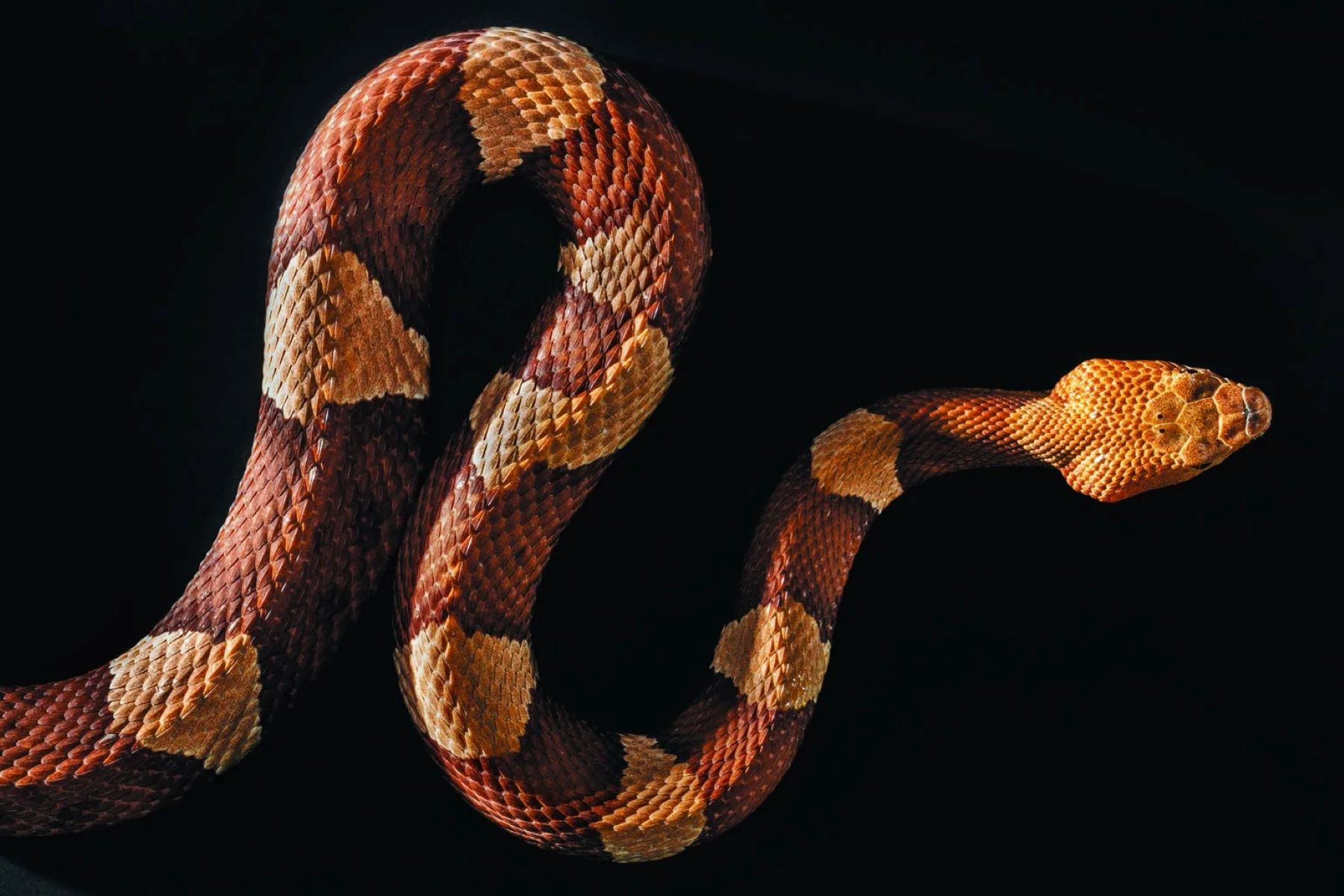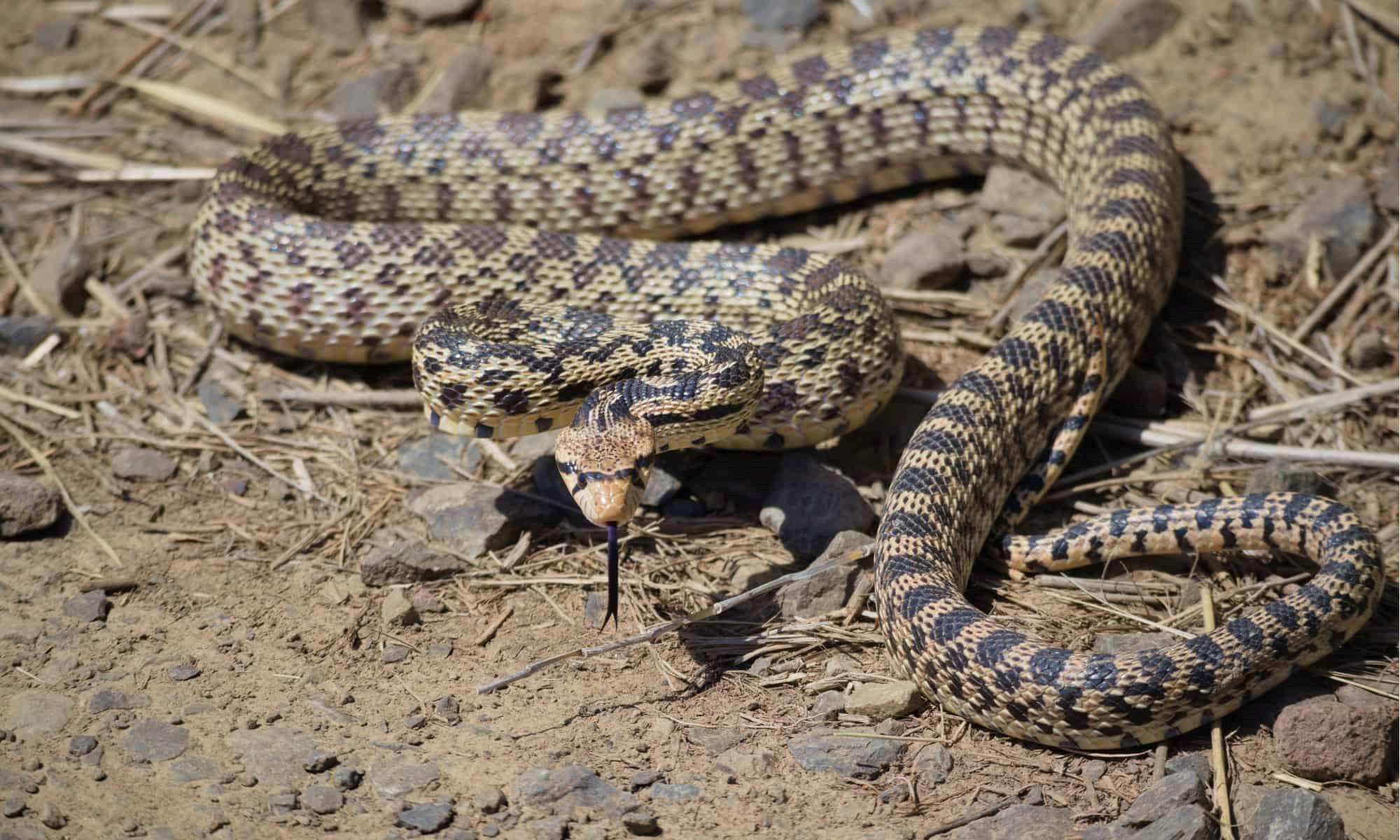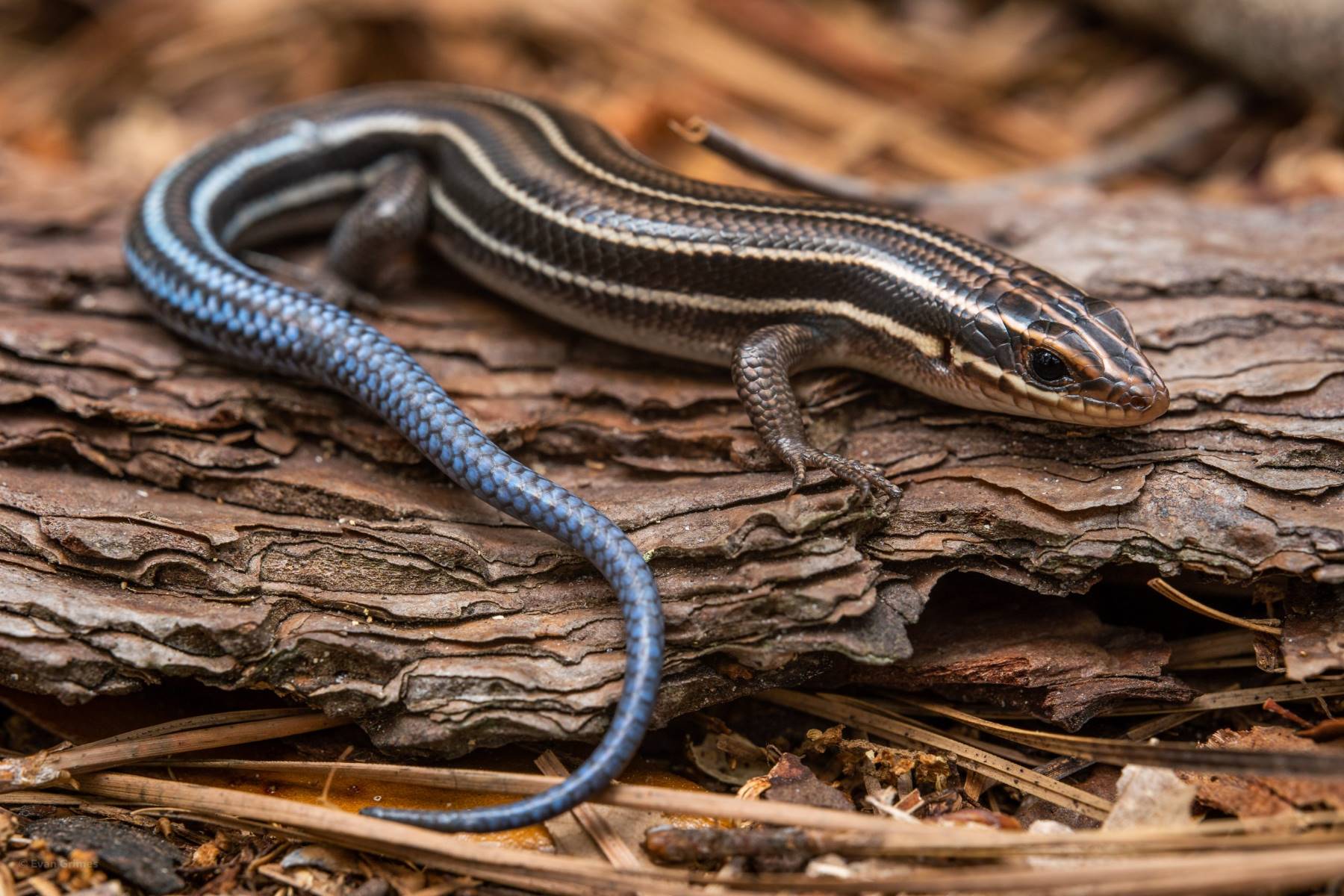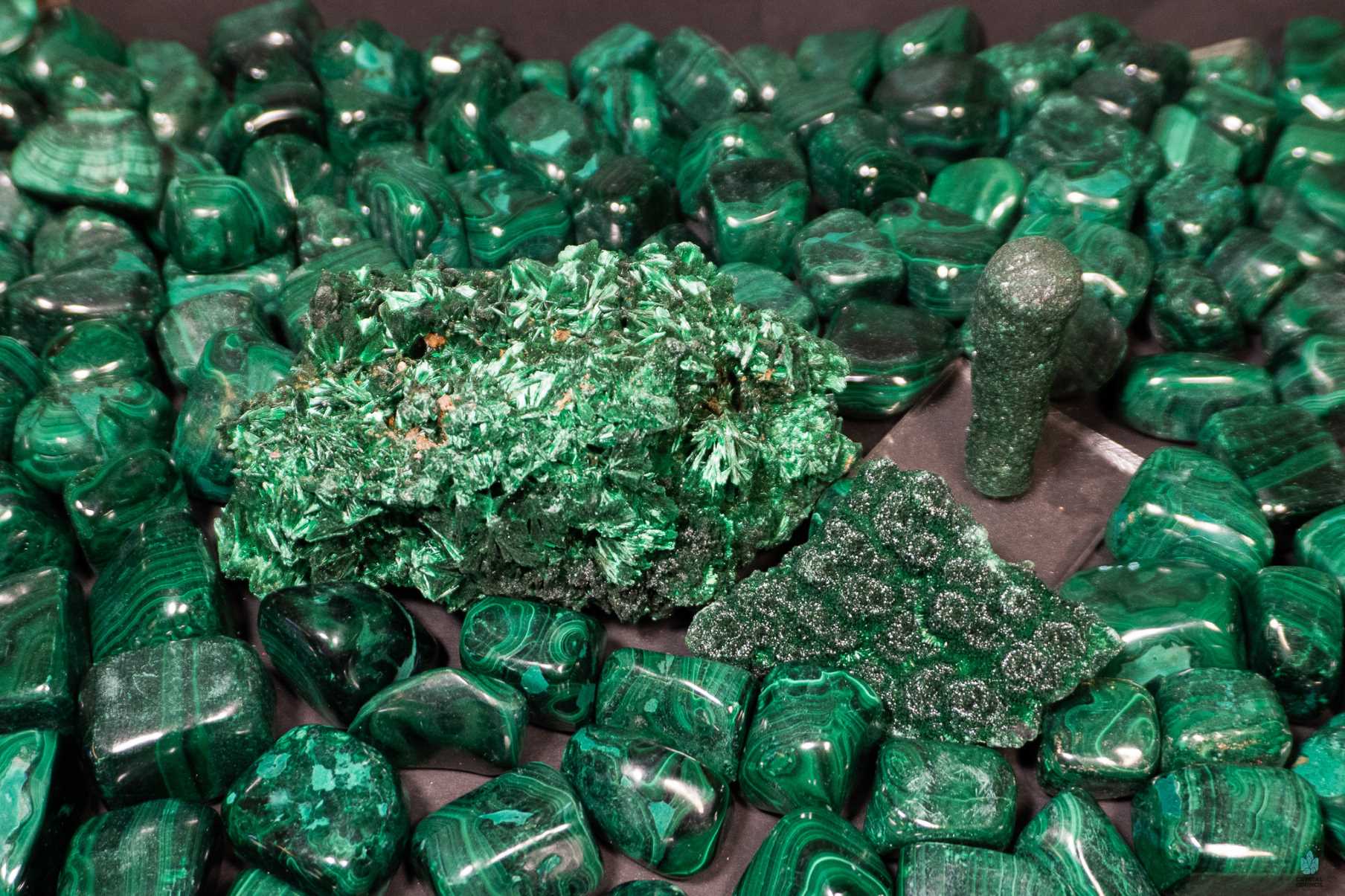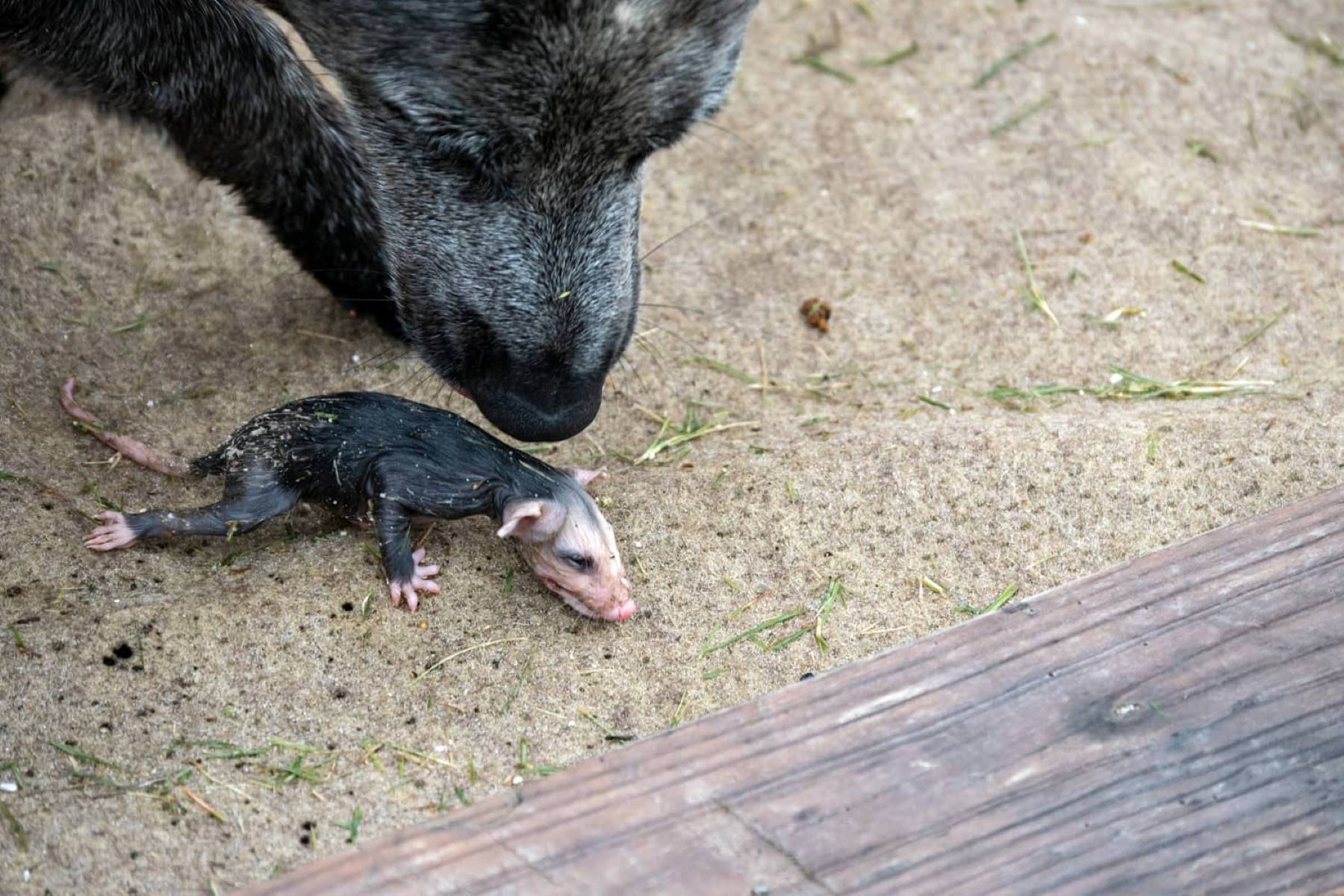Home>Science>Deadly Snakes In Tennessee: Know The Venomous Species And Their Habitats


Science
Deadly Snakes In Tennessee: Know The Venomous Species And Their Habitats
Published: January 28, 2024
Discover the deadly snakes of Tennessee and their habitats. Learn about the venomous species and their behavior in this comprehensive guide. Expert insights from the world of science.
(Many of the links in this article redirect to a specific reviewed product. Your purchase of these products through affiliate links helps to generate commission for Regretless.com, at no extra cost. Learn more)
Table of Contents
Introduction
Tennessee, known for its stunning landscapes and rich biodiversity, is home to a variety of snake species. While many of these snakes are harmless and play crucial roles in the local ecosystem, some are venomous and pose potential threats to humans. Understanding the venomous snakes in Tennessee, along with their habitats and identifying characteristics, is essential for promoting safety and coexistence with these fascinating creatures.
In this article, we will delve into the world of deadly snakes in Tennessee, shedding light on the venomous species that inhabit the region. By exploring the distinct features and habitats of these snakes, we aim to equip readers with valuable knowledge for staying safe while exploring the natural beauty of Tennessee. Whether you are a resident or a visitor, being aware of the venomous snakes in the area can enhance your outdoor experiences and ensure a harmonious relationship with the diverse wildlife that calls Tennessee home.
Venomous Snakes in Tennessee
Tennessee is inhabited by several venomous snake species, each with its own unique characteristics and habitats. While encounters with these snakes are relatively rare, it is crucial to be aware of their presence and understand the potential risks they pose. Let's explore the venomous snakes that command attention in Tennessee.
Copperhead
The Copperhead, known for its distinct copper-colored head, is a venomous pit viper found across Tennessee. With its hourglass-shaped markings and vibrant copper hues, this snake is known for its camouflaging abilities, often blending seamlessly into its surroundings. Copperheads are commonly found in wooded areas, rocky hillsides, and near water sources, making them a notable presence in the state's diverse landscapes.
Cottonmouth
Also referred to as the Water Moccasin, the Cottonmouth is another venomous snake species prevalent in Tennessee. Recognizable by its dark, banded body and a distinctive white mouth, this snake is often found in and around bodies of water, including swamps, marshes, and streams. Its semi-aquatic nature makes the Cottonmouth a prominent resident of Tennessee's wetland areas, adding to the complexity of the state's snake population.
Timber Rattlesnake
The Timber Rattlesnake, characterized by its prominent rattle at the end of its tail, is a formidable venomous snake found in Tennessee. This species is known for its large size and can be found in a variety of habitats, including forests, rocky outcrops, and rugged terrains. With its cryptic coloration and well-developed camouflage, the Timber Rattlesnake is an intriguing yet potentially dangerous presence in the state's wilderness.
Pygmy Rattlesnake
The Pygmy Rattlesnake, as its name suggests, is a smaller yet venomous snake species that inhabits Tennessee. Recognizable by its small size and distinct rattle, this snake is often found in grassy areas, pine woodlands, and scrubby habitats. While its venom is potent, the Pygmy Rattlesnake typically exhibits a non-aggressive demeanor, preferring to retreat when encountered by humans.
These venomous snakes contribute to the rich tapestry of Tennessee's wildlife, underscoring the importance of understanding and respecting their presence in the natural environment. By gaining insights into the characteristics and habitats of these snakes, individuals can cultivate a deeper appreciation for the intricate ecosystems that these creatures are a part of.
Copperhead
The Copperhead, known by its scientific name Agkistrodon contortrix, is a venomous pit viper that holds a significant place in the wildlife of Tennessee. Its name is derived from the rich coppery coloration of its head, setting it apart from other snake species in the region. This distinctive characteristic, coupled with its hourglass-shaped markings, renders the Copperhead a fascinating yet potentially dangerous inhabitant of Tennessee's diverse landscapes.
As an adept hunter, the Copperhead primarily preys on small rodents, amphibians, and insects, contributing to the delicate balance of the local ecosystem. Its preferred habitats include wooded areas, rocky hillsides, and the vicinity of water sources, where it can seamlessly blend into the surroundings, thanks to its remarkable camouflaging abilities. This adaptability allows the Copperhead to thrive in a variety of environments, making it a notable presence across Tennessee.
Measuring between 2 to 3 feet in length, the Copperhead possesses a relatively stout body and a broad, triangular-shaped head, characteristic of pit vipers. Its venom, while potent, is primarily used for subduing prey rather than as a means of aggression towards humans. However, caution is warranted when encountering this snake, as its bite can result in painful symptoms and medical complications that require prompt attention.
Despite its venomous nature, the Copperhead plays a crucial role in the intricate web of Tennessee's ecosystems. By regulating the population of small mammals and contributing to the balance of local food chains, the Copperhead underscores the significance of coexisting with the diverse wildlife of the region.
Understanding the behaviors and habitats of the Copperhead is essential for fostering a harmonious relationship between humans and these captivating creatures. By respecting their presence and exercising caution in their habitats, individuals can appreciate the vital role that the Copperhead and other venomous snakes play in Tennessee's natural environment.
Cottonmouth
The Cottonmouth, also known as the Water Moccasin, holds a significant place among the venomous snakes inhabiting Tennessee. With its dark, banded body and a distinctive white mouth, this formidable snake commands attention in the state's wetland areas. The name "Cottonmouth" stems from the snake's defensive display, where it exposes the white interior of its mouth as a warning signal when feeling threatened.
This venomous pit viper is well-adapted to its semi-aquatic lifestyle, often found in and around bodies of water such as swamps, marshes, and streams. The Cottonmouth's preference for these wetland habitats aligns with its diet, which primarily consists of fish, amphibians, and small mammals that frequent these aquatic environments. Its ability to swim with ease and move through waterlogged terrain underscores its prowess as a skilled predator in Tennessee's diverse ecosystems.
Measuring between 2 to 4 feet in length, the Cottonmouth exhibits a robust build and a relatively large head, featuring heat-sensing pits that aid in detecting prey and potential threats. While encounters with humans are rare, the Cottonmouth's venom, though potent, is primarily used for subduing prey rather than as a means of aggression. However, caution is essential when navigating the areas where these snakes are known to reside, as their defensive nature can lead to potentially harmful interactions.
The presence of the Cottonmouth in Tennessee's wetland areas underscores the intricate relationship between these snakes and their surrounding environments. By preying on aquatic species and contributing to the delicate balance of local food chains, the Cottonmouth plays a vital role in shaping the dynamics of the state's ecosystems.
Understanding the behaviors and habitats of the Cottonmouth is crucial for promoting safety and coexistence with these captivating creatures. By recognizing their significance in Tennessee's natural environment and exercising caution when exploring their habitats, individuals can cultivate a deeper appreciation for the diverse wildlife that enriches the state's landscapes.
Timber Rattlesnake
The Timber Rattlesnake, scientifically known as Crotalus horridus, is a prominent venomous snake species that commands attention in the wilderness of Tennessee. Renowned for its distinctive rattle located at the end of its tail, this formidable snake embodies both mystery and danger, adding to the allure of Tennessee's diverse ecosystems.
Measuring between 3 to 5 feet in length, the Timber Rattlesnake boasts a robust build and a series of dark, contrasting bands along its body, contributing to its cryptic coloration that allows it to blend seamlessly into its natural surroundings. This remarkable camouflage, coupled with its preference for habitats such as forests, rocky outcrops, and rugged terrains, makes the Timber Rattlesnake a challenging yet captivating presence in the state's wilderness.
As an ambush predator, the Timber Rattlesnake preys on small mammals, birds, and other reptiles, utilizing its potent venom to subdue its quarry. Despite its venomous nature, this snake typically exhibits a non-aggressive demeanor, often choosing to retreat when confronted by humans. However, caution is warranted when traversing areas known to be inhabited by the Timber Rattlesnake, as its defensive behavior can lead to potentially harmful encounters.
The Timber Rattlesnake's role in Tennessee's ecosystems extends beyond its formidable presence. By regulating the population of small mammals and contributing to the intricate web of predator-prey dynamics, this species plays a vital role in shaping the delicate balance of the state's natural environments. Additionally, its existence serves as a testament to the resilience and adaptability of wildlife in the face of evolving landscapes and human encroachment.
Understanding the behaviors and habitats of the Timber Rattlesnake is essential for promoting safety and coexistence with these captivating creatures. By acknowledging their significance in Tennessee's natural environment and exercising caution when exploring their habitats, individuals can foster a deeper appreciation for the diverse wildlife that enriches the state's landscapes. The Timber Rattlesnake stands as a testament to the intricate beauty and complexity of Tennessee's ecosystems, underscoring the importance of preserving and respecting the natural world that surrounds us.
Pygmy Rattlesnake
The Pygmy Rattlesnake, scientifically known as Sistrurus miliarius, is a fascinating venomous snake species that holds a unique place in the diverse wildlife of Tennessee. Despite its diminutive size, typically ranging from 15 to 22 inches in length, this snake commands attention due to its potent venom and distinctive rattle, showcasing the intricate beauty of Tennessee's ecosystems.
Recognizable by its small yet robust build and a series of dark blotches along its body, the Pygmy Rattlesnake is often found in grassy areas, pine woodlands, and scrubby habitats across the state. Its cryptic coloration allows it to blend seamlessly into its surroundings, making it a challenging yet captivating presence in Tennessee's diverse landscapes.
As an ambush predator, the Pygmy Rattlesnake preys on small rodents, lizards, and amphibians, utilizing its potent venom to subdue its quarry. Despite its venomous nature, this snake typically exhibits a non-aggressive demeanor, often choosing to retreat when encountered by humans. Its small size and reclusive nature make it a rare sight, adding an air of mystery to its presence in Tennessee's natural environments.
The Pygmy Rattlesnake's role in the state's ecosystems extends beyond its formidable presence. By regulating the population of small mammals and contributing to the delicate balance of local food chains, this species plays a vital role in shaping the dynamics of Tennessee's natural environments. Additionally, its existence serves as a testament to the resilience and adaptability of wildlife in the face of evolving landscapes and human encroachment.
Understanding the behaviors and habitats of the Pygmy Rattlesnake is essential for promoting safety and coexistence with these captivating creatures. By acknowledging their significance in Tennessee's natural environment and exercising caution when exploring their habitats, individuals can foster a deeper appreciation for the diverse wildlife that enriches the state's landscapes. The Pygmy Rattlesnake stands as a testament to the intricate beauty and complexity of Tennessee's ecosystems, underscoring the importance of preserving and respecting the natural world that surrounds us.
Habitat of Venomous Snakes
The habitat preferences of venomous snakes in Tennessee are as diverse as the snakes themselves. Understanding the specific environments where these snakes thrive is crucial for promoting safety and coexistence with these captivating yet potentially dangerous creatures.
Copperheads, known for their camouflaging abilities, are commonly found in wooded areas, rocky hillsides, and near water sources. These habitats provide ample opportunities for the Copperhead to conceal itself while preying on small rodents and amphibians. The varied terrain of Tennessee's landscapes offers an ideal environment for these snakes to thrive, emphasizing the need for vigilance when navigating these natural settings.
Cottonmouths, with their semi-aquatic nature, predominantly inhabit wetland areas such as swamps, marshes, and streams. Their affinity for aquatic environments aligns with their diet, which primarily consists of fish, amphibians, and small mammals that frequent these areas. Navigating these watery habitats requires a heightened awareness of the potential presence of Cottonmouths, ensuring a harmonious coexistence with these formidable snakes.
Timber Rattlesnakes, known for their cryptic coloration and preference for forests, rocky outcrops, and rugged terrains, are skilled at blending into their surroundings. These diverse habitats provide ample opportunities for the Timber Rattlesnake to hunt small mammals and contribute to the delicate balance of the local ecosystems. Exploring these terrains demands a keen eye for potential encounters with these enigmatic snakes.
Pygmy Rattlesnakes, often found in grassy areas, pine woodlands, and scrubby habitats, are adept at utilizing their cryptic coloration to remain hidden from sight. Their preference for these environments underscores the need for caution when traversing these landscapes, as the Pygmy Rattlesnake's reclusive nature adds an air of mystery to its potential presence.
By gaining insights into the habitat preferences of venomous snakes in Tennessee, individuals can navigate the state's diverse landscapes with heightened awareness and respect for the wildlife that inhabits them. Acknowledging the significance of these habitats and exercising caution when exploring them fosters a deeper appreciation for the intricate ecosystems that these snakes are an integral part of.
Identifying Venomous Snakes
Identifying venomous snakes in Tennessee is a crucial skill that can help individuals navigate the state's diverse landscapes with heightened awareness and caution. While encounters with these snakes are relatively rare, being able to distinguish between venomous and non-venomous species is essential for promoting safety and coexistence with the local wildlife.
Characteristics to Look For
Venomous snakes in Tennessee exhibit distinct physical characteristics that can aid in their identification. Some key features to look for when encountering a snake include:
-
Head Shape: Venomous snakes, such as the Copperhead and Cottonmouth, typically have triangular-shaped heads, distinct from the more slender and rounded heads of non-venomous species.
-
Pit Organs: Pit vipers, a group of venomous snakes that includes the Copperhead and Timber Rattlesnake, possess heat-sensing pits located between their eyes and nostrils, aiding in detecting prey and potential threats.
-
Eye Shape: Venomous snakes often have elliptical or cat-like pupils, whereas non-venomous snakes generally have round pupils.
-
Coloration and Patterns: While coloration can vary widely among snake species, venomous snakes in Tennessee, such as the Copperhead and Timber Rattlesnake, often exhibit distinct patterns, such as hourglass-shaped markings and dark bands along their bodies.
Behavioral Cues
In addition to physical characteristics, observing the behavior of a snake can provide valuable insights into its venomous nature. Some behavioral cues to consider include:
-
Aggression: Venomous snakes may exhibit defensive behaviors when feeling threatened, such as coiling, hissing, or striking. Non-venomous snakes, on the other hand, are more likely to retreat when encountering humans.
-
Rattling: Some venomous snakes, like the Timber Rattlesnake and Pygmy Rattlesnake, possess rattles at the end of their tails, which they may use as a warning signal when feeling cornered.
Seeking Professional Assistance
If unsure about the identity of a snake, it is crucial to seek assistance from wildlife experts or local authorities. Professional herpetologists and wildlife professionals can provide valuable guidance and help in identifying the species in question, ensuring the safety of both humans and the snakes themselves.
By familiarizing themselves with the distinguishing features and behaviors of venomous snakes in Tennessee, individuals can navigate the state's natural environments with a heightened sense of awareness and respect for the diverse wildlife that inhabits them. This knowledge contributes to a harmonious coexistence with the captivating yet potentially dangerous snakes that call Tennessee home.
Safety Precautions
When venturing into the natural landscapes of Tennessee, it is essential to prioritize safety and awareness, especially when it comes to potential encounters with venomous snakes. By adhering to the following safety precautions, individuals can mitigate risks and foster a harmonious coexistence with the diverse wildlife of the region.
-
Stay Vigilant: Maintaining a vigilant mindset while exploring Tennessee's outdoor spaces is paramount. Keeping a keen eye on the ground and surrounding vegetation can help individuals spot and avoid potential encounters with venomous snakes.
-
Wear Appropriate Footwear: Opting for sturdy, closed-toe footwear can provide an additional layer of protection against snake bites. This simple precaution can significantly reduce the risk of sustaining a bite while traversing varied terrains.
-
Use Caution Near Water: Given the affinity of certain venomous snakes, such as Cottonmouths, for aquatic environments, exercising caution around bodies of water is crucial. Vigilance near swamps, marshes, and streams can help minimize the likelihood of unexpected snake encounters.
-
Stick to Designated Trails: Following designated trails and pathways minimizes the likelihood of inadvertently stepping into snake-inhabited areas. These established routes offer a safer means of exploring the natural beauty of Tennessee while reducing the risk of snake encounters.
-
Educate Yourself and Others: Sharing knowledge about venomous snakes and their habitats with fellow outdoor enthusiasts can contribute to a collective understanding of safety measures. Educating oneself and others about the characteristics and behaviors of venomous snakes fosters a community-wide commitment to responsible and safe outdoor experiences.
-
Remain Calm and Respectful: In the event of a snake encounter, maintaining a calm demeanor and giving the snake space is essential. Most snake bites occur when individuals attempt to handle or provoke the snake. Respecting the snake's presence and allowing it to move away peacefully enhances safety for both humans and the snake.
-
Seek Immediate Medical Attention: In the unfortunate event of a snake bite, seeking immediate medical attention is imperative. Identifying the snake, if possible, can aid healthcare professionals in providing appropriate treatment. Remaining calm and seeking prompt medical care is crucial for a positive outcome.
By incorporating these safety precautions into outdoor excursions, individuals can embrace the natural wonders of Tennessee while prioritizing safety and respect for the venomous snakes that contribute to the state's rich biodiversity. These measures not only enhance personal safety but also promote a balanced coexistence with the captivating wildlife that defines Tennessee's landscapes.
Conclusion
In conclusion, the diverse landscapes of Tennessee are home to a captivating array of venomous snakes, each playing a unique role in the intricate web of the state's ecosystems. From the distinctive copper hues of the Copperhead to the semi-aquatic prowess of the Cottonmouth, and the enigmatic presence of the Timber Rattlesnake and Pygmy Rattlesnake, these snakes contribute to the rich tapestry of Tennessee's wildlife. Understanding their characteristics, habitats, and safety precautions is essential for promoting coexistence and ensuring safety while exploring the natural beauty of the region.
The significance of identifying venomous snakes cannot be overstated, as this knowledge empowers individuals to navigate Tennessee's outdoor spaces with heightened awareness and respect for the diverse wildlife that inhabits them. By recognizing the physical and behavioral cues of venomous snakes, individuals can embrace outdoor experiences with a sense of caution and appreciation for the natural world.
Moreover, the habitat preferences of venomous snakes underscore the need for vigilance and respect when traversing Tennessee's varied terrains. Whether exploring wooded areas, wetland habitats, or rugged terrains, being mindful of potential encounters with these snakes enhances safety and fosters a harmonious coexistence with the captivating creatures that call Tennessee home.
The safety precautions outlined provide a practical framework for responsible outdoor exploration, emphasizing the importance of staying vigilant, wearing appropriate footwear, and respecting the natural habitats of venomous snakes. Educating oneself and others about these safety measures contributes to a collective commitment to responsible and safe outdoor experiences, ensuring that the natural beauty of Tennessee can be enjoyed while minimizing potential risks.
Ultimately, the coexistence with venomous snakes in Tennessee is a testament to the delicate balance of the state's ecosystems. By embracing a mindset of respect, awareness, and responsible stewardship of the natural world, individuals can forge a deeper connection with the captivating wildlife that enriches Tennessee's landscapes. Through knowledge, caution, and appreciation, the presence of venomous snakes becomes an integral part of the intricate beauty and complexity of Tennessee's natural environments.
